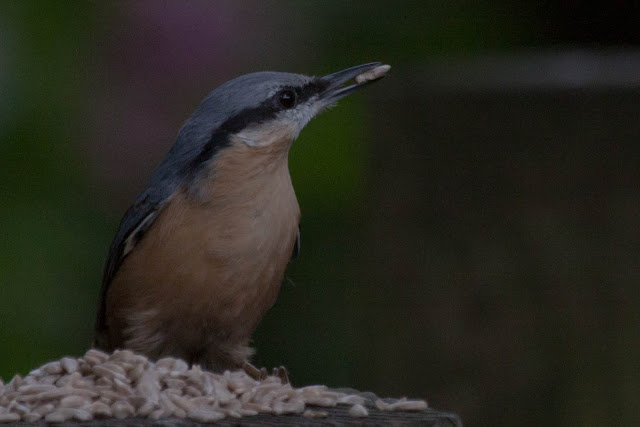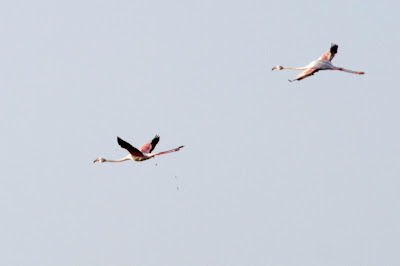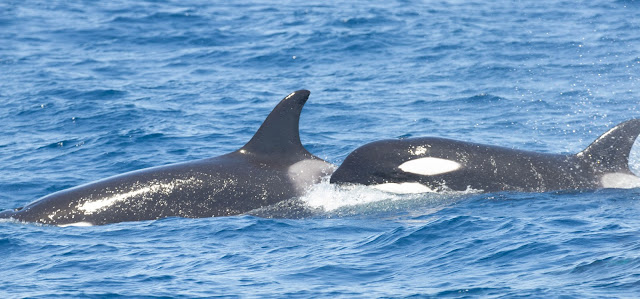 |
| (Digi-scope) Curlew Numenius arquata |
Back to Spain Thursday and rain promised for Wednesday and departure day (been next to nothing since we have been here; just the on heavy shower on the third day)so with the promise of a dry, warm day the only bad news was being informed that today is a bank holiday. Not to worry, problem solver by leaving early and arriving in the car park at 7.30 so well over four hours and on the homeward journey before the excessive heat and visitors arrived! Crows, Rooks and Woodpigeons as I approached the site and then, on the A606 with Rutland Water on my left and Barnsdale on my right, about a dozen Jackdaws took off from the telephone wires. Why? Looked up and just above the birds was a passing Osprey heading for the water and breakfast; anyone for Rainbow Trout? The first Magpie of the day as I drove down to Egleton and then both Blackbirds and more Jackdaws in the car park and a Collared Dove behind me.
A quick look at the feeding station at a deserted Visitors Centre revealed Blue and Great Tit along with Robin, Dunnock, Chaffinch and House Sparrow. A short stop at the Redshank, Grebe and Osprey hides revealed the "sleeping" wildfowl with (mainly) Gadwall, Teal, Mallard, a handful of Wigeon, Coot and Back-headed Gull present but not helped with the low, rising sun straight in my face.
 |
| Little Egret Egretta garzetta |
Off to the Shoveler hide overlooking Lagoon 3 but, again, apart from the fewer birds the sun was far from helpful but I did add Tufted Duck and Little Grebe. Nothing to add at the remaining hides overlooking lagoon 3 so I made my way back to the now-open Visitors Centre, passing a cock and four juvenile Pheasants on the way, paid my entrance fee and took a good look at Lagoon1. Lots of Cormorants and Lapwing along with no shortage of Black-headed Gulls and this was where the main flock of Canada Geese were to be found, there must have been an hundred or more. Ducks were mainly Mallard and Gadwall along with Teal but I did find a few Tufted Duck albeit most of the last were seen from the Snipe hide overlooking South Arm III. Immediately in front of the viewing window a Reed Bunting posed on top of a large bush.
Then a pleasant walk south of the Visitors Centre calling at both the Mallard and Snipe hides, where I also added my first Goldfinch of the morning, before completing my walk at the 360 hide. Here I found a good-sized flock of Greylag Geese plus a handful of Egyptian Geese. Moorhens and Coots along with Lapwing and wildfowl represented by Mallard, Teal and Gadwall. However, a slight movement away to my right led to me finding the single Greenshank and a similar movement on the far shore in front of me revealed a lone Curlew bust probing away. Again, another opportunity to try out a little more digi-scoping.
 |
| Another attempt at a (Digi-scope) Curlew Numenius arquata |
Time to leave the site and drive round for a brief stop at the Lyndon Centre before continuing on home. Not only Tree Sparrows, Blue and Great Tits on the feeders this morning but also a couple of Greenfinch and then a very large charm of Goldfinches. The top of the bust to the left that produced the Sparrowhawk on Saturday now held a family of Long-tailed Tits and then, finally, the arrival of both Willow Warbler and Chiffchaff immediately in front of me. Home by just after midday with a final total of 45 species.
Birds seen:
Greylag Goose, Canada Goose, Egyptian Goose, Gadwall, Wigeon, Mallard, Teal, Tufted Duck, Pheasant, Little Grebe, Great Crested Grebe, Cormorant, Little Egret, Heron, Osprey, Moorhen, Coot, Lapwing, Black-tailed Godwit, Curlew, Greenshank, Green Sandpiper, Black-headed Gull, Great Black-backed Gull, Common Tern, Woodpigeon, Collared Dove, Dunnock, Robin, Blackbird, Chiffchaff, Willow Warbler, Long-tailed Tit, Blue Tit, Great Tit, Magpie, Jackdaw, Rook, Carrion Crow, Common Starling, House Sparrow, tree Sparrow, Chaffinch, Greenfinch, Goldfinch, Reed Bunting.
Check out the accompanying website at http://www.birdingaxarquia.weebly.com for the latest sightings, photographs and additional information.
















































